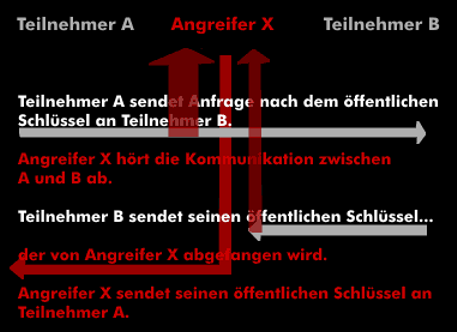asymmetrical encryption
Cryptosystems with asymmetric encryption methods know two matching asymmetric keys. Both keys are independent of each other and it is also not possible to use one key to calculate the other. The two keys are a publicly accessible key, the public key(PK) for the public key method, and a secret, private key for the private key method.
The publicly accessible key can be used by any user toencryptmessages. However, the encrypted message can only be decrypted by the recipient who possesses the private key. Data encrypted with the public key can only be decrypted with the private key.
In asymmetric encryption, for example, the sending user could first encrypt the message with his private secret key and then encrypt the encrypted message a second time with the public key. On the receiving side, the received message is first decrypted with the recipient's secret key and then with the public key.
In contrast to symmetric encryption methods, asymmetric methods are much slower because the keys for encryption and decryption are much longer than those used in symmetric encryption, but they have the advantage of higher key security.
In practice, hybrid encry ption methods are being developed to exploit the advantages of both methods.
Among the asymmetric encryption methods are: The Rivest-Shamir-AdlemanRSA method, the S/ MIME algorithm, Triple DES( 3DES), Pretty Good Privacy( PGP), the Diffie-Hellman algorithm( DHA), elliptic curve cryptography ( ECC) and various others.


